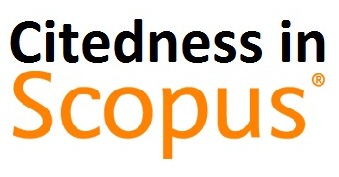Implementation of Decision Support in Mutual Fund Investment Selection using MOORA
DOI:
https://doi.org/10.38043/tiers.v4i1.4369Keywords:
MOORA, Mutual Fund, MCDMAbstract
This research focuses on the application of the Multi-Objective Optimization method based on Ratio Analysis (MOORA) as part of the Decision Support System (DSS) in the selection of mutual fund investments in Indonesia. The purpose of this study is to help novice investors who often find it difficult to choose mutual funds due to lack of knowledge. Considering that the number of investors continues to increase, especially during and after the pandemic, this research becomes relevant and important. The MOORA method was chosen because of its ease and flexibility in handling various criteria compared to other Multiple Criteria Decision Making (MCDM) methods. The five criteria taken as calculation material are return, risk, cost, liquidity, and reputation of the investment manager. The results showed that the MOORA method is effective in providing objective and data-driven investment recommendations. Considering various relevant criteria and weights, MOORA can provide mutual fund ratings that match investors' preferences and risk tolerance. Thus, this research successfully achieved its goal of assisting novice investors in choosing mutual funds. These results suggest that MOORA can be an important part of DSS in the context of mutual fund investing.
Downloads
References
A. Masruroh, “Konsep Dasar Investasi Reksadana,” SALAM J. Sos. dan Budaya Syar-i, vol. 1, no. 1, 2014, doi: 10.15408/sjsbs.v1i1.1526.
B. Dwiprakasa and C. F. Dharmastuti, “Karakteristik Reksa Dana Dan Kinerja Reksa Dana Saham Di Indonesia,” J. Manaj., vol. 13, no. 1, pp. 94–116, 2016, doi: 10.25170/jm.v13i1.810.
M. Soedarman, P. M. Afifah, and A. K. Usri, “Pengaruh Compound Annual Growth Rate, Drawdown, Expense Ratio, Dan Total Asset Under Management Terhadap Pengambilan Keputusan Berinvestasi Pada Dana Reksa,” Meas. J. Akunt., vol. 16, no. 1, pp. 80–86, 2022, doi: 10.33373/mja.v16i1.4064.
D. N. Tari, “Setahun Corona di Indonesia, Pasang Surut IHSG dan Generasi Baru Investor Saham,” Bisnis.Com, 2021. https://market.bisnis.com/read/20210302/7/1362610/setahun-corona-di-indonesia-pasang-surut-ihsg-dan-generasi-baru-investor-saham (accessed Jan. 22, 2023).
I. Handayani, “Jumlah Investor Ritel Pasar Modal Terus Meningkat Selama Pandemi,” Investor ID, 2022. https://investor.id/market-and-corporate/294936/jumlah-investor-ritel-pasar-modal-terus-meningkat-selama-pandemi (accessed Apr. 02, 2023).
M. Atif Sattar, M. Toseef, and M. Fahad Sattar, “Behavioral Finance Biases in Investment Decision Making,” Int. J. Accounting, Financ. Risk Manag., vol. 5, no. 2, p. 69, 2020, doi: 10.11648/j.ijafrm.20200502.11.
A. Puška, A. Beganovic, and S. Šadic, “Model for investment decision making by applying the multi-criteria analysis method,” Serbian J. Manag., vol. 13, no. 1, pp. 7–28, 2018, doi: 10.5937/sjm13-12436.
M. Majumder, “Multi Criteria Decision Making,” in Impact of Urbanization on Water Shortage in Face of Climatic Aberrations, 2015, pp. 35–48.
A. Ishizaka and P. Nemery, Multi-Criteria Decision Analysis: Methods and Software. 2013.
E. K. Zavadskas, Z. Turskis, and S. Kildiene, “State of art surveys of overviews on MCDM/MADM methods,” Technol. Econ. Dev. Econ., vol. 20, no. 1, pp. 165–179, 2014, doi: 10.3846/20294913.2014.892037.
L. Pérez-Domínguez, L. A. Rodríguez-Picón, A. Alvarado-Iniesta, D. Luviano Cruz, and Z. Xu, “MOORA under Pythagorean Fuzzy Set for Multiple Criteria Decision Making,” Complexity, vol. 2018, 2018, doi: 10.1155/2018/2602376.
W. K. M. Brauers and E. K. Zavadskas, “The MOORA method and its application to privatization in a transition economy,” Control Cybern., vol. 35, no. 2, pp. 445–469, 2006.
D. K. Chronopoulos, F. I. Papadimitriou, and N. Vlastakis, “Information Demand and Stock Return Predictability,” SSRN Electron. J., pp. 1–33, 2015, doi: 10.2139/ssrn.2556179.
Anita, “PENGUKURAN PEMILIHAN SAHAM DAN PENETAPAN WAKTU MENGGUNAKAN MODEL TREYNOR-MAZUY PADA REKSADANA SYARIAH DI INDONESIA,” J. Etikonomi, vol. 13, no. 1, pp. 1–20, 2019.
A. Yusuf, “PEMBENTUKAN PORTOFOLIO REKSADANA SAHAM YANG OPTIMAL MENGGUNAKAN ALGORITMA GENETIKA MULTI OBJEKTIF,” IPB, 2012.
E. Y. Adhi Sakti and M. N. H. Ryandono, “Kinerja Reksadana Saham Syariah Berdasarkan Kemampuan Pemilihan Saham Dan Kemampuan Penetapan Waktu Di Indonesia Periode Maret 2019 – Maret 2021,” J. Ekon. Syariah Teor. dan Terap., vol. 9, no. 1, p. 25, 2022, doi: 10.20473/vol9iss20221pp25-33.
R. Desiyanti, “PERSISTENSI DAN KONSISTENSI KINERJA REKSADANA DI INDONESIA,” J. Kaji. Manaj. Bisnis, vol. 3, no. 1, 2014.
K. C. Kirana, C. Bintang, W. Winata, I. Astuti, and I. R. Putra, “Prediksi rating reksadana berbasis algoritma decision tree pada sistem informasi reksadana,” TEKNO, vol. 29, no. 2, pp. 140–151, 2019.
H. Kusumawardani, “Pengaruh risiko, likuiditas, ukuran perusahaan, harga dan usia terhadap ownership reksadana saham periode 2000-2002,” Universitas Airlangga, 2005.
R. Yunitarini and E. . Widiaswanti, “Decision Support System for Industry Machine Maintenance Using Weight Product (WP) Method”, TIERS, vol. 3, no. 2, pp. 91-99, Dec. 2022.
Downloads
Published
How to Cite
Issue
Section
License
Copyright (c) 2023 Soetam Rizky Wicaksono

This work is licensed under a Creative Commons Attribution-ShareAlike 4.0 International License.





















